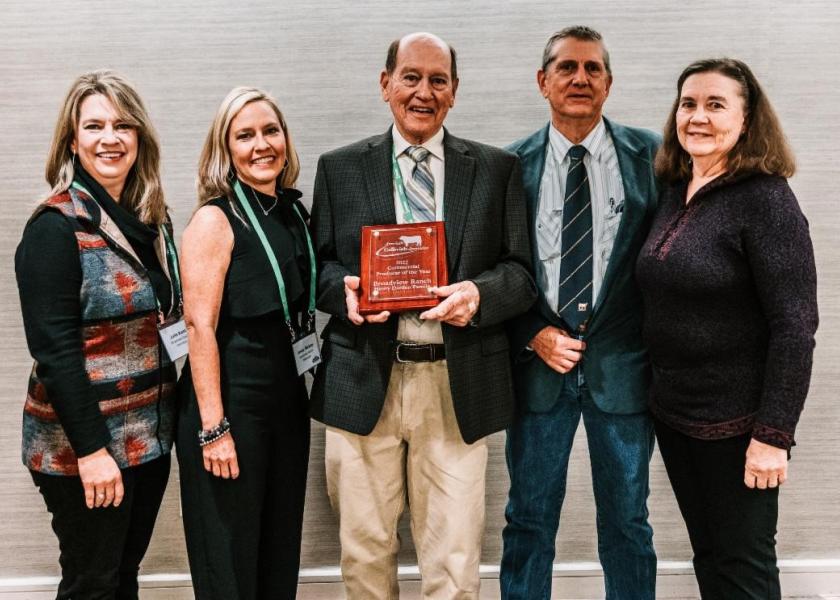Gelbvieh Commercial Producer of the Year: Broadview Ranch

Broadview Ranch is the recipient of the 2022 AGA Commercial Producer of the Year award. Broadview Ranch was presented with this honor during the awards banquet of the 2022 AGA National Convention on December 9, 2022, in Louisville, Kentucky.
Broadview Ranch is a commercial cow-calf operation located in Centreville, Mississippi, and operated by the Henry Darden family. Darden is the third-generation of Broadview Ranch and has been in the cattle business since his father started in 1942. Today, the ranch is home to a herd of 420 brood cows and utilizes a simplified crossbreeding system focusing on Balancer® genetics.
Darden has a passion for reading and studying new trends to improve operation management as the industry continues to progress. Darden credits an article written by Dr. Keith Gregory from the U.S. Meat Animal Research Center in Clay Center, Nebraska, for encouraging him to look further into simplified crossbreeding.
A professor at Mississippi State University recommended Darden add Gelbvieh genetics to his herd as they thrive in the humid, wet environment of southwest Mississippi. Darden began using Gelbvieh/Hereford crossbred bulls from South Dakota and has used Gelbvieh or Gelbvieh-cross bulls ever since.
"We swapped over to the Balancers that are a very nice cross which helps the farm with easy crossbreeding," explained Darden. "We have bought Balancers exclusively for probably five years."
Balancer cattle are heat tolerant and allow for easy calving on the ranch. Darden retains ownership of his calves through the feedlot and is continually looking for new opportunities to increase his profit in the commercial cattle business. He has recently started feeding his calves in Iowa through an all-natural beef program.
"The Balancers are an easy cross for us because we like the black-hided cattle," said Darden. "I spend hours looking at the EPDs on the bulls we buy. We focus heavily on carcass, calving ease, and stayability traits, and always buy all of our bulls from the same producer."
The AGA Commercial Producer of the Year Award honors individuals who use Gelbvieh and Balancer® genetics in progressive commercial cattle operations and are proactive in their promotion of the breed.







